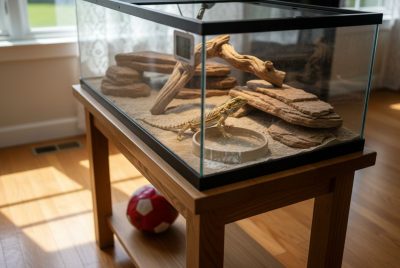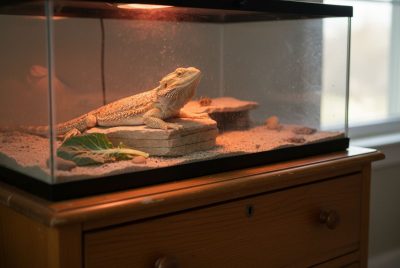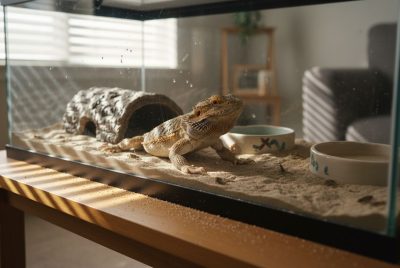Witblits Bearded Dragon: My Guide as an Enthusiast & Advisor
My Journey with Witblits Bearded Dragons
Let me tell you how I first encountered the term “Witblits” in the bearded dragon world—and why it nearly blew my reptile-lover mind. A few years back, I was scrolling through forums and saw people referring to “Witblits dragons” with enthusiasm, and I asked myself: is this a new morph, a lineage, or just a nickname? As I dove deeper, I realized it was part identity, part mystery. Over time, I’ve cared for several bearded dragons associated with the “Witblits” label, adjusted my care strategies, and learned what works (and what doesn’t). In this article, I want to walk you through everything I’ve discovered—and the lessons I’ve learned—so that if you’re considering a Witblits bearded dragon or already have one, you’ll feel more confident and less alone.
Understanding the “Witblits” Term
Origin of the Name “Witblits”
First, the name itself—“Witblits”—is Afrikaans in origin, meaning “white lightning.” It refers generally to extremely high-contrast or pale colorations in reptiles. In the bearded dragon scene, some breeders and keepers use “Witblits” to denote dragons with very bright, striking patterns, high contrast, or perhaps a more “neon” appearance. But—and here’s where nuance comes in—it’s not a formally recognized morph in the same way “trans” or “hypo” are. It’s more of a descriptive label. Because it isn’t standardized, two dragons labeled “Witblits” can vary significantly in appearance, genetics, and behavior.
Distinctions from Other Bearded Dragons
When I compare a “Witblits” to, say, a normal or leatherback bearded dragon, I see that some “Witblits” individuals carry color traits that make their highlights pop more: brighter oranges, yellows, or fluorescent edging. But that doesn’t necessarily mean they require dramatically different care. What matters more is lineage, health, and individual temperament than a label. In fact, I treat them mostly like any other bearded dragon, with small tweaks based on color sensitivity or stress potential. If you buy a “Witblits,” don’t expect a magical creature—expect a dragon with personality, quirks, and care needs like any other.
Choosing a Witblits Bearded Dragon
Health Checks & Morph Considerations
When I went hunting for a Witblits, my first port of call was health. I looked for bright, clear eyes; a full, rounded tail base (no kink, no thin base); smooth, symmetrical scales; no signs of shedding trouble or lesions. Avoid dragons that seem lethargic or have poor appetite. As for morphs, if a breeder says a dragon is Witblits + “hypo” or “trans,” ask to see both parents, photos, and lineage. Beware exaggeration. I found that reputable breeders were open about pairing and genetic stability—and that transparency meant a lot to me.
Age, Temperament & Breeding Background
I usually prefer juvenile or subadult dragons—they’re past the fragile hatchling stage but still open to bonding. With Witblits colorations, early handling matters because bright dragons can be more reactive to changes in their environment. Ask about temperament: was this dragon handled regularly? Did it show aggression or stress? A breeder’s willingness to let you see the dragon interact, eat, move, is often more telling than slick photos. Also, if breeding is on your horizon, ask whether either parent had health issues (e.g., egg retention, metabolic disease). That way, I could avoid passing down problems.
Enclosure Setup & Environment
Tank Size & Substrate
I keep my adult bearded dragons in enclosures at least 120 × 60 × 60 cm (approx 48×24×24 in), and for particularly showy or more active dragons, I sometimes go bigger. Juveniles may start in smaller enclosures, but upgrade them early. For substrate, I use a mix: reptile carpet or tile for everyday use, with a corner of non-toxic sand or soil for digging. I avoid loose sand everywhere since impaction risk is real. Some owners go full tile or slate to simplify cleaning.
Lighting, Heat, and UVB
Lighting and UVB are non-negotiable. I use a high-output UVB tube (10–12 % or equivalent) placed so that part of the basking area is within the recommended distance. Over the basking spot, I provide a ceramic heat emitter or halogen basking bulb to reach perhaps 38–42 °C (100–107 °F). On the cooler side of the tank, ambient temperatures of 24–28 °C (75–82 °F) work well during the day. At night, drop to ~ 22 °C (72 °F) or lower, but avoid drafts. Proper gradients—hot to cool zones—are crucial so the dragon can thermoregulate.
Furnishings & Hideouts
I include flat basking rocks, driftwood branches, cork flats, and hide boxes. One hides in the cooler zone, one in the warmer zone—so my dragon always has a retreat. For a Witblits, because bright coloration can mean higher stress sensitivity, having shaded retreats and “soft shade” spots (overhanging bark, plants) makes a big difference. In my setup, I also include a shallow water dish and occasionally mist the substrate lightly (not to raise humidity dramatically, just to allow them to lick moisture).
Temperature & Humidity Regulation
Basking Zones & Gradient
I set up a basking spot with the highest temperature—around 38–42 °C (100–107 °F)—and gradually taper down to 28–30 °C (82–86 °F) on the cool end. That gradient lets my dragon choose where to be based on digestion, comfort, or stress. In the mornings, I’ll turn on the basking bulb first to let the tank warm gradually. I monitor with two digital probes—one in the basking area, one in the cool zone.
Nighttime Temperatures
When night falls, I blackout the lights but maintain some background warmth if needed. Usually, I let the temperature fall to ~ 20–22 °C (68–72 °F). If I see it dropping below that in cold seasons, I’ll use a ceramic heater or heater pad (on very low), but never exceed safe temperature ranges. Sudden temperature swings are stress triggers, and with more color-sensitive dragons, I’ve seen stress shedding or appetite loss if nights are too cold.
Nutrition & Feeding
Insects & Live Prey
My dragons get a mix of gut-loaded crickets, dubia roaches, black soldier fly larvae (BSFL), and occasionally hornworms. For younger dragons, I feed insects daily; for adults, 3–4 times per week. I dose calcium (without D3) on most feedings, and full calcium + vitamin D3 once a week. Always dust prey right before presenting. I keep gut loading strict—greens, veggies, high calcium feed—to ensure insects carry nutrients.
Vegetables & Greens
I offer a salad mix daily: collard greens, mustard leaves, dandelion greens, turnip greens, occasionally squash, bell pepper, and carrot slices. Generally, I aim for ~ 70–80 % greens in adult diets, decreasing insects gradually. I avoid spinach, iceberg lettuce, and heavy goitrogenic plants. For my Witblits dragons, I noticed greens with varied textures help them chew, and leafy garnish helps stick insects/dust better to prey.
Supplements & Vitamins
I use calcium without D3 on most feedings, and supplement with calcium + D3 once weekly (if UVB exposure is good). I also use a reptile multivitamin (liquid or dust) once or twice a month. I’m cautious not to oversupplement (leading to hypercalcemia). Especially with bright dragons, I monitor for signs of metabolic bone disease or soft jaws, and adjust accordingly.
Daily Care & Handling
Routine Cleaning & Health Checks
Daily, I remove uneaten food, spot-clean droppings, wipe water dishes, and check tank temps. Weekly, I deep-clean the substrate area, disinfect hideouts, and wash surfaces with reptile-safe disinfectants. During all this, I visually inspect my dragon for weight changes, swelling, clear eyes, a good tail base, active movement, and no signs of mites or parasites.
Taming & Socialization Tips
From the moment I brought my first Witblits home, I handled gently and often (starting with short sessions). I allowed him to walk onto my hand (or upside my hand) rather than grabbing. I talk to him softly, move slowly, and always support his whole body. Over weeks, he grew to tolerate being on my shoulder, exploring a safe room, and even relaxing in my lap. I reinforce trust by feeding close to when I handle. Be patient: aggressive dragons need more time.
Common Health Issues & Prevention
Metabolic Bone Disease (MBD)
MBD is a frequent threat if UVB, calcium, or nutrition is off. Signs: soft jaw, twitching limbs, tremors, “rubber” posture. I prevent it by ensuring reliable UVB, proper calcium supplementation, and a balanced diet. If I ever see early signs, I take action—adjust UVB, increase calcium, and consult a reptile vet immediately.
Parasites & Skin Problems
Internal parasites (worms) or external mites can plague bearded dragons. I always get a fecal exam when adopting new dragons, and annually thereafter. If mites appear (tiny moving specks), I isolate the dragon and treat with vet-approved products. For skin problems: irregular shedding, retained eye caps, lesions—I ensure humidity, hydration, and proper lighting.
Signs of Stress or Illness
Loss of appetite, lethargy, hiding constantly, drastic weight loss, dark stress coloration (black beard), open-mouth breathing—they all signal trouble. With my dragons, I often catch early signs because I compare behavior daily. If anything seems off for more than a day, I contact a reptile vet rather than wait.
Breeding Considerations
When to Breed
I only consider breeding when dragons are mature (usually 12–18 months, healthy weight, well-fed) and show good temperament. I also monitor female readiness: she should be strong, healthy, laid a few clutches before (if applicable), and cycle correctly. I don’t push dragons to breed just to sell “rare colors”—their health comes first.
Eggs, Incubation & Care
Once eggs are laid, I remove them gently and incubate them at proper temps (approx 29–31 °C). I use vermiculite or perlite in a moisture-balanced mix (e.g. 1:1 by weight water to medium). I monitor humidity (~ 80–90 %) and temperature. After hatching, I care for the hatchlings with similar setups to juveniles, adjusted for size. With “Witblits” bloodlines, I keep good records: which parent, clutch, hatch date, growth, and morphology.
Costs & Long-Term Commitment
Setup Costs
When I first set up, I spent a good amount on a quality enclosure, lighting system, heating, hides, decor, substrate, and testing gear (thermometers, hygrometers). All told, an initial setup can cost several hundred $, easily. But I view it as an investment in health and longevity.
Ongoing Expenses
Feeding live insects, fresh greens, supplements, electricity for lights/heaters, replacing UVB bulbs (every 6–12 months), vet visits, substrate refreshes—all add up. I budget monthly for food and supplies and maintain an “emergency fund” for health checks or unexpected needs.
My Personal Tips & Lessons Learned
Over time, I fine-tuned my routines:
- Always keep spare parts (a backup UVB, bulbs).
- Record temperatures daily.
- Rotate greens so dragons don’t get bored.
- Watch their weight (I weigh mine monthly).
- Never skip a vet check if something feels “off.”
- Don’t overcrowd—I learned the hard way that bright dragons sometimes stress more easily, so I keep one per tank unless very large.
One lesson I’ll never forget: when one of my dragons lost appetite suddenly, I realized the UVB tube was dying (output declining), and adjusting it brought him back. That taught me not to trust a “working” lamp indefinitely—replace proactively.
Myths & Misconceptions
Myth: “Witblits means stronger or healthier dragon.” Not true—it’s mostly about color and contrast, not internal health or resilience.
Myth: “You must feed bright dragons differently.” Nutrition is broadly the same; color doesn’t require magical diets.
Myth: “They need extremely high UVB beyond normal levels.” Overdoing UVB is risky (burns), so follow manufacturer and vet guidelines.
Myth: “If your dragon isn’t glowing, it’s not a true Witblits.” Appearance varies widely; glow is subjective and smartphone-tint dependent.
When to Seek a Vet & Selecting One
I always keep contact info for a reptile-experienced vet. When I see signs like lethargy, swelling, inability to defecate, serious weight loss, or injuries, I go immediately. For selecting a vet: I look for someone with reptile credentials, ask about experience specifically with bearded dragons, read reviews, and, if possible, visit to see their setup and ask questions. A good vet is worth gold.
Transitioning & Upgrading Care
As my dragons mature, I often upgrade their tanks, change out bulbs, diversify diets, and adjust handling intensity. When I shifted one from a 90 × 45 × 45 cm to a 120 × 60 × 60 cm with better lighting, the dragon visibly perked up. Never assume “set and forget”—monitor and evolve care over time.
Conclusion & Final Thoughts
Caring for a Witblits bearded dragon is just as much art as science. The label may add some mystique, but ultimately, what matters most is providing an optimized environment, nutrition, handling, and vigilance. Over the years, I’ve seen dragons stunningly vibrant, thriving, and full of character. But I’ve also seen those that struggled due to neglect, poor lighting, or diet missteps. My hope is that by sharing my experiences and strategies, your journey will be smoother, happier, and more rewarding. Treat your dragon as you would a companion—observe, adapt, learn—and you’ll likely enjoy a long, fulfilling bond.
FAQs
1. What exactly makes a bearded dragon a “Witblits”?
It’s a descriptive label for high-contrast, bright, almost “lightning-white edge” appearance, not an officially standardized morph.
2. Do I need to change diet or UVB specifically for a Witblits?
No. Their core nutritional and UVB needs are the same as standard bearded dragons—just ensure quality, consistency, and monitoring.
3. How often should I replace UVB lighting?
Every 6–12 months (depending on the brand) even if it still appears to glow—its UV output degrades over time.
4. Can I breed my Witblits with non-Witblits dragons?
Yes—but keep good records of lineage. The “Witblits” trait may or may not show strongly in offspring. Health and temperament should always come first.
5. What’s the biggest mistake new keepers make with these dragons?
Skimping on lighting or substrate safety (loose sand everywhere) and neglecting regular health checks. Proper UVB, cleaning, diet, and observation are game changers.




